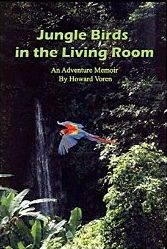Should We Hand-Feed Future Breeding Stock?
© Howard Voren. Click here to use this content.Q: We have been told that most large parrots, especially macaws and Amazons, become better and earlier breeders if you allow the parents to raise them for two to three weeks before pulling them for hand-raising. We have been incubator-hatching in order to increase production. Now that we must start holding back for future breeding, we have considered allowing the parents to incubate and hatch the babies. With many of our pairs, this would mean a definite decrease in yearly production. Of course, this would be worth it if it made a difference in how productive the young would be. Is there really a major difference in breeding those babies that are hand-raised from the egg in comparison with those that are fed by the parents for the first two to three weeks?
A: First, let me say that the best captive producers are those birds that are raised and weaned in your aviaries either by their biological or surrogate parents. Departing from this, there is relatively no difference in those babies that are hand-raised from Day 1 as opposed to those that are left with the parents for the first two or three weeks. The difference is in how the bird is socialized during and after the weaning process. A bird’s most meaningful psychological development takes place after the third or fourth week of life, not before. In fact, it can be argued that the psychological development that the bird undergoes directly before, during and immediately after the weaning process is the major determining factor.
I realize that there are conflicting views on this subject. For this reason, we at Voren’s Aviaries have studied this very carefully. We have paid specific attention to the macaws and Amazons. What we have found is what I have outlined above. I then proceeded to try to determine why there were so many prominent aviculturists who felt differently. Upon interrogating my colleagues, I found that their feelings were influenced either directly or indirectly by the philosophies of only one or two very prominent aviculturists. From that point on, what took place were self-fulfilling prophecies. Birds that were going to be held back for future breeding were left with the parents for three to four weeks, and birds for the pet trade were “pulled” early or incubator-hatched. Their records showed that those birds that were left with the parents for the extended period of time did grow up to be earlier and more reliable breeders than those that were held back in previous years that had been raised from the egg or pulled from the nest early. What they did not consider, but did admit to under interrogation, was that those birds that were pulled late and, therefore, “earmarked” as future breeders from the very moment that they were pulled were treated much differently than those that were destined for the pet trade. They were not played with or coddled during the weaning stage. They were not talked to or interacted with on a human personal level. Most importantly, they were socialized with other birds of like upbringing throughout their personality-development period. Most of them did not realize that they were, in fact, creating their own positive statistics. They also admitted that those babies that were, in the past, pulled early or incubator-hatched and kept as future breeders were, in fact, treated in the same manner as those that were destined for the pet trade. They were treated as pets during their developmental stages, not as future breeders. As one well-known breeder put it, “In the past, the birds that were kept back for breeding were more likely those that didn’t sell right away, not those that were raised in a less personal fashion.”
Unfortunately, there are many examples in aviculture of self-fulfilling prophecies reinforcing false “facts.”


